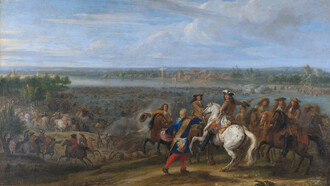Culture and art are fundamental elements of human expression and experience. They help us connect, communicate, and understand one another in ways that words alone cannot. Each art form, from literature and dance to performing arts and painting, exemplifies human creativity and imagination. Yet, culture and art have an impact beyond just aesthetics. They also provide a window into the values, convictions, and traditions that influence society, capturing the spirit of past, present, and future times.
The capacity of culture and art to cross borders and unite people is one of its most impressive qualities. Despite linguistic, cultural, or religious differences, individuals can connect emotionally via music, dance, and other performance arts. Literature and the arts also foster empathy and understanding among cultures, enabling us to view the world from the perspective of others. Culture and art act as social change drivers instead of mere representations of human experience. Throughout history, revolutions in politics and society have been sparked by artists and cultural figures who have pushed the envelope and challenged conventional norms.
Morocco is a kingdom with a colorful culture and a lengthy history. Promoting its art and culture to a worldwide audience is crucial since they are inextricably linked to the country's identity. The rich tapestry of music, dance, literature, and visual arts created by Morocco's distinctive fusion of Berber, Arab, and African traditions should be recognized and shared with the rest of the world. There are a variety of advantages to promoting Moroccan art and culture. Firstly, it can help to increase the nation's exposure on the world stage. Morocco can attract visitors, investors, and cross-cultural connections by showcasing its artistic and cultural heritage. More opportunities for economic growth, job creation, and cultural understanding may result. Secondly, tradition can be nurtured by supporting Moroccan art and culture. Every civilization values its cultural legacy, which must be safeguarded for future generations. And thirdly, we can improve awareness for and inspire individuals to uphold Moroccan art and culture by sharing it. Initiatives like museums, art galleries, cultural festivals, and educational programs can achieve this.
Lalla Essaydi, a photographer and painter recognized for her feminist and postcolonial themes, is one of the most well-known Moroccan artists. By exploring the complicated history and politics of Morocco and the Arab region, Essaydi's work questions mainstream ideas of gender, identity, and power. Her images generally feature ladies wrapped in complex fabrics and calligraphy, challenging the Western gaze and undermining stereotypes of the exotic and fetishized "Eastern" lady. Essaydi's artwork has been displayed in galleries and museums worldwide. She has won various accolades.
Another well-known name in Moroccan art is the visual artist Yto Barrada. Barrada is renowned for her eclectic and creative style and a strong interest in politics, history, and identity. Barrada's work frequently addresses the multifaceted social and political environment of Morocco. She focuses on issues like urbanization, migration, and cultural hybridity.
Consequently, promoting Moroccan art and culture may help to eradicate cultural divides and foster mutual respect among various communities inside and outside of Morocco. Art and culture also help people of diverse backgrounds understand each other better by bridging linguistic and cultural borders. This is especially crucial in the international society we live in today when cultural variety is increasingly acknowledged as the standard.
In conclusion, authentic expressions of people are found in culture and art. They enable us to relate, empathize, and change the environment in which we live. Culture and art play a crucial role in determining our shared destiny as we continue to manage the difficulties and complexity of our modern society.















